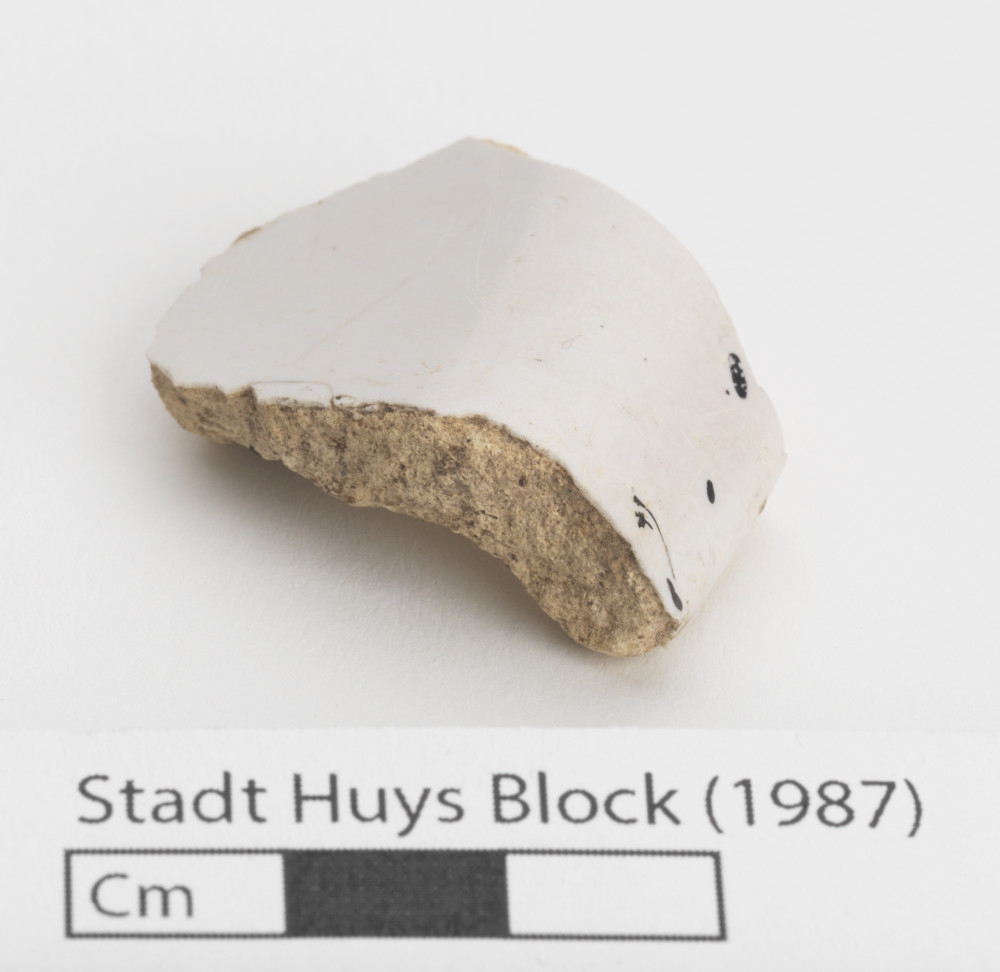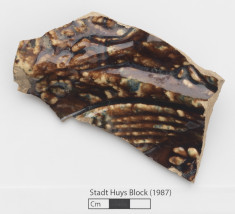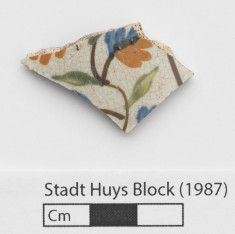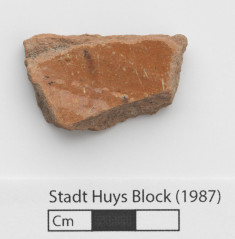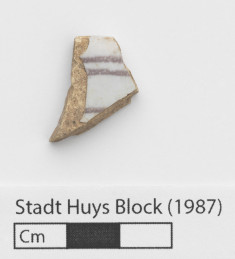Introduction: Lots 8, 9, and 15 are modern designations for adjacent parcels of land that were owned together and used as a single property until the early 1830's. Excavations produced important discoveries like that of the Colonial-era Lovelace Tavern, proving that significant archaeological resources could still exist in urban spaces. Project archaeologists were able to lobby for increased time and funds to continue their work on the strength of these finds, leading to additional discoveries. In all, the project provided considerable information about the history of New York City and its inhabitants from the 17th to the 20th centuries.
Rationale: Test Cut AO1 was excavated to further investigate archaeological features found in Test Cut AO. These features include a cistern, privy, builder's trench, and foundation wall. Importantly, the excavations of the test cuts in the backyard of Lot 9 revealed that this area was the most archaeologically intact on the entire project. This means that many archaeological features, artifacts, and intact stratigraphical layers were discovered during testing. Test Cut AO1 is an important resource for understanding the historical development of Lot 9.
Results: A 6-foot deep builder's trench for a privy was discovered during excavations of Test Cuts AO and AO1. The stratigraphy of the trench indicates that the privy was built sometime between ca. 1810 and 1829. The ca. 1829 hard-packed dirt floor found across the backyard of Lot 9 overlays the top layer of the builer's trench, offering a Terminus Ante Quem. The privy itself appears to have been used until the 1880s.
Lot 9, Test Cut AO1, Stratum III, Level A
-
Collection method
Trowel, Screen (1/4-inch mesh). Natural Level.
-
Soil description
Medium, Dark, and Light Brown Mottled Sandy Silt
-
Munsell
10YR 4/2, 10YR 6/6

